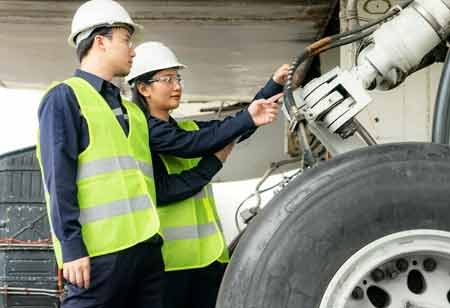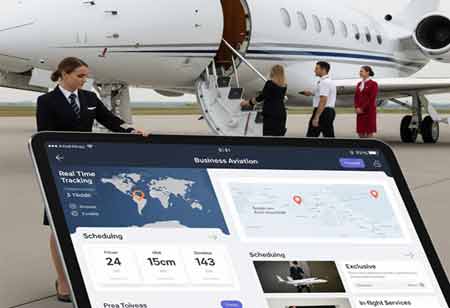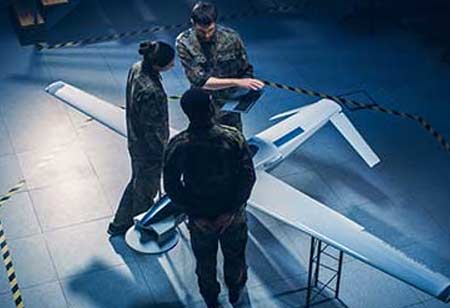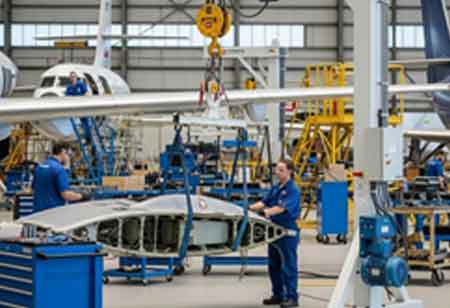Integrating AI, automation, and data analytics revolutionizes maintenance processes, drives efficiency, and enhances safety. The Federal Aviation Administration (FAA) Repair Stations form the backbone of the aviation industry's aircraft maintenance, repair, and overhaul (MRO). The certified facilities ensure that aircraft components, engines, avionics, and airframes are maintained to meet the highest safety and performance standards.
Along with progress come challenges that the industry must address to remain agile and compliant in a fast-paced, highly regulated environment. Developing strategies that meet regulatory standards and foster innovation and adaptability becomes essential. It ensures that organizations can thrive despite the market's complexities and stakeholders' evolving demands. By prioritizing flexibility and compliance, we can turn challenges into opportunities for growth and success.
AI Trends Shaping Industries
Several factors drive the growing importance of FAA Repair Stations in aviation. Global air travel continues to grow, increasing the demand for aircraft maintenance services. Airlines are extending aircraft lifecycles to maximize asset value, raising the need for reliable and timely repairs. Stricter safety regulations and the growing complexity of aircraft systems necessitate highly specialized repair stations with advanced technical capabilities. They seek MRO providers offering cost-effective yet efficient solutions, pushing repair stations to innovate and optimize operations.
AI is making a significant impact on FAA repair stations. AI technologies are being integrated into maintenance operations to improve accuracy, reduce human error, and speed up diagnostic processes. ML algorithms analyze massive amounts of historical data to predict component failures, allowing repair stations to transition from reactive to predictive maintenance. The proactive approach reduces aircraft downtime and minimizes unexpected failures, enhancing operational reliability. AI can be used in borescope inspections where image recognition algorithms detect anomalies in engine components far quicker than human inspectors.
The latest trends in FAA Repair Stations include AR for maintenance training and remote support, digital twins for simulating component performance, and blockchain for improving parts traceability and authenticity. IoT enables real-time monitoring of aircraft components through sensor data. The technologies, when combined, allow FAA Repair Stations to create smarter workflows, streamline compliance reporting, and meet turnaround time (TAT) demands more efficiently. Adopting paperless maintenance records and electronic task cards is helping to reduce manual processes and human errors while enabling quicker audits and inspections.
Navigating Applications and Challenges
FAA Repair Stations serve various functions across both commercial and military aviation sectors. Their services range from routine inspections and part replacements to overhauls and component repairs. The facilities maintain critical aircraft systems such as hydraulics, landing gear, avionics, propulsion systems, and structural elements. One of the growing application areas is in Unmanned Aerial Vehicles (UAVs), where FAA-certified repair facilities are beginning to extend their expertise. As drones become more integrated into commercial operations, specialized MRO services for UAVs will open new business opportunities for repair stations.
Many repair stations struggle to recruit and retain qualified personnel capable of handling increasingly sophisticated aircraft systems. Technology implementation, although beneficial, presents integration challenges. Legacy systems, fragmented data platforms, and resistance to digital change can stall progress. Cybersecurity is an emerging risk, especially as more repair stations adopt digital tools and cloud-based solutions. Protecting sensitive maintenance data and operational systems from breaches is critical to maintaining trust and operational integrity.
FAA Repair Stations invests in workforce development programs in partnership with technical colleges and aviation schools. The initiatives aim to build a pipeline of skilled AMTs by offering apprenticeships, certification programs, and upskilling opportunities. Regarding regulatory compliance, digital compliance tools are being adopted to automate documentation and streamline the audit process. The systems help ensure traceability and reduce the burden of manual compliance tasks. Integration platforms and enterprise resource planning (ERP) systems are used to unify fragmented maintenance data and facilitate real-time decision-making.
Cybersecurity concerns are being tackled through rigorous risk assessments, staff training, and the implementation of firewalls, encryption, and two-factor authentication protocols. Partnerships with cybersecurity firms help ensure that digital tools used within FAA Repair Stations are robust, secure, and compliant with data protection regulations.
Market Trends: Shaping Tomorrow
The role of FAA Repair Stations in the global aviation ecosystem is increasingly pivotal. As commercial and cargo fleets continue to grow, so does the reliance on MRO services that can guarantee aircraft safety and minimize operational disruption. The ability of a repair station to deliver rapid, accurate, and cost-effective services directly influences airline profitability. The aftermarket aviation services industry is expected to grow steadily, creating demand and competition among FAA Repair Stations.
The need for FAA Repair Stations extends beyond traditional aircraft. Repair stations that adapt early to these technological changes by training staff, investing in new tools, and updating procedures will gain a competitive edge in a niche yet rapidly growing market. As sustainability becomes a primary focus in aviation, FAA Repair Stations must adapt to environmentally conscious practices. These include green disposal methods for hazardous materials, eco-friendly cleaning agents, and energy-efficient facility operations.
The integration of AI, digital tools, and innovative technologies is elevating the capabilities of repair stations, making them faster, more accurate, and more reliable. While labor shortages, cybersecurity, and regulatory complexity persist, solutions are being developed and implemented to ensure sustained progress. The demand for certified repair stations will only increase as aviation evolves, making their role more crucial than ever in a globally connected, safety-driven industry.









